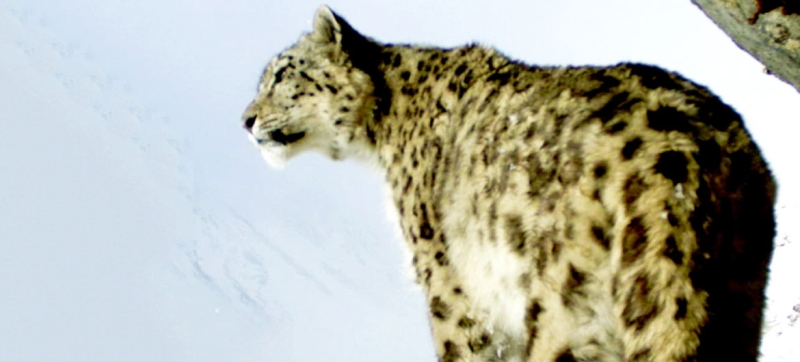
Snow leopards are threatened by poaching, declines in the numbers of ungulates they hunt, and habitat destruction. Save the snow leopard: volunteers in Central Asia rush to help the “ghost of the mountains” Climate and environment
The snow leopard is an “elusive” animal, a rare species of the cat family. In Central Asia it is called the “ghost of the mountains.” Its population continues to decline.
Plight
The snow leopard, or snow leopard, is threatened by poaching, declines in the numbers of ungulates they prey on, as well as conflict with humans and habitat destruction due to infrastructure development and climate change. Poachers kill snow leopards for their valuable fur, and local residents may shoot them for attacks on livestock: this happens when predators lack wild prey.
October twenty-third is International Snow Leopard Day. They decided to celebrate it in order to draw attention to the decline in the snow leopard population and to unite international efforts to preserve this rare animal.
Today there are only 3,500 to 7,000 individuals in the world. The species is officially classified as “vulnerable”. That’s just one step away from the “endangered” category.
Experts say the snow leopard’s plight is symbolic of a larger wildlife crisis unfolding in the snowy mountains of Central Asia.
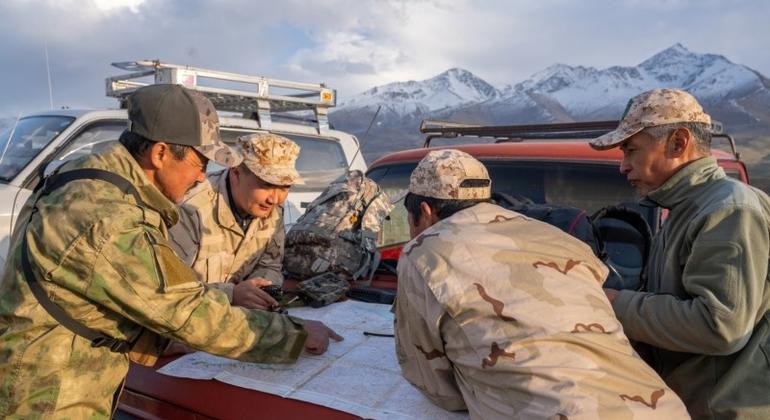
But the situation in some areas gives hope. Among them is a section of the Tien Shan mountain system in Kyrgyzstan. A small group of volunteer rangers have taken on patrolling 380 square kilometers of one of the harshest areas in Central Asia.
Backing the freezing cold, they try to protect the snow leopard and preserve its environment habitat.
Mountains of Kyrgyzstan: the struggle for survival
More than 90 percent of Kyrgyzstan, a landlocked country of 7 million people, is mountainous. The country’s peaks are home to a variety of wildlife, including argali, known for its large curling antlers, the Siberian ibex, one of the largest ibexes in the world, and the Tien Shan, a relative of the deer. But many of these animals are suffering due to climate change and human activity.
For generations, Kyrgyzstan’s vast plains and high mountain grasslands have supported a thriving livestock industry. However, rising temperatures are drying up glacier-fed springs, and falling humidity levels are starving lowland grasses of moisture, locals say. This forces herders to climb higher into the mountains – to where snow leopards and their prey used to live.
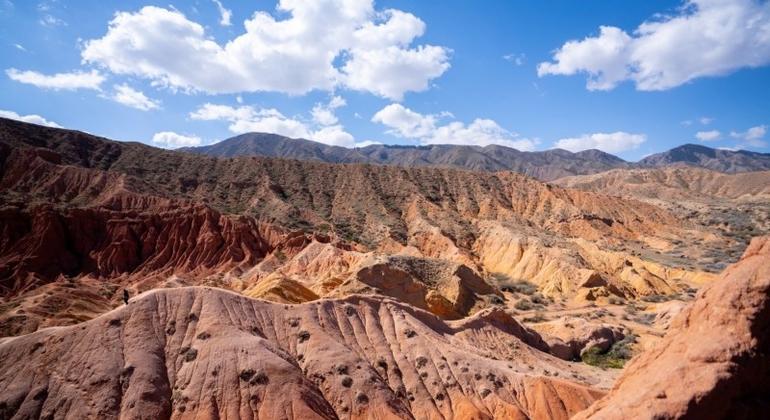
The consequences for wildlife could be catastrophic, conservationists say. The habitats of many migratory animals, including snow leopards, are shrinking. Wild sheep, deer and other herbivores are forced to compete with livestock for pasture. In addition, many wild animals face an increasing risk of contracting livestock-borne diseases to which they have little or no immunity.
UN support
Several environmental projects are aimed at counteracting these negative factors. Among them is a project implemented by the United Nations Environment Program (UNEP) in collaboration with local partners, public organizations CAMP Alatoo and the Ilbirs Foundation, with financial support from Germany. It aims to help rural communities adapt to a rapidly changing climate and protect the wildlife around them.
Among other things, UNEP supported the creation of an ecological corridor 200 kilometers wide connecting several nature reserves in Kyrgyzstan. This “wildlife superhighway,” part of 10,000 square kilometers of protected areas, allows species to navigate a changing climate. It is considered critical for the survival of migratory animals such as argali and Siberian mountain goats, the main prey of the snow leopard.
See for yourself eyes
Part of the corridor is patrolled by volunteer rangers, such as 51-year-old Baatyrbek Akmatov. He and five others are responsible for patrolling the 380-kilometer-long Bayboosun public nature reserve in northern Kyrgyzstan. Many of the rangers are former hunters.
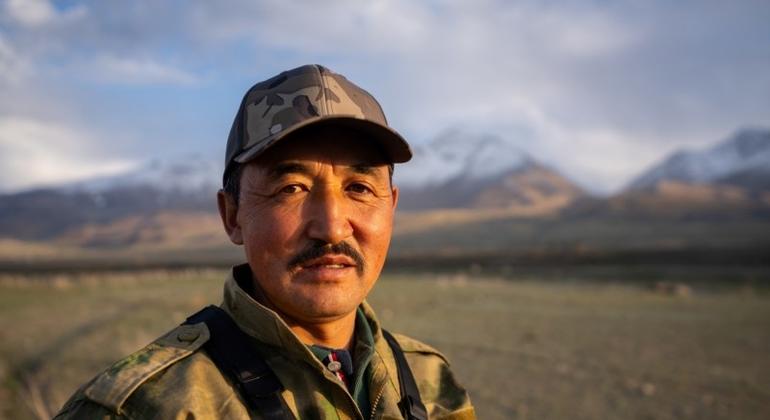
They travel in cars and even on horseback, hunting down both poachers and shepherds who bring their livestock into environmentally sensitive areas.
“We decided to start this business because otherwise we would lose everything,” Akmatov says, speaking of the ranger corps. – I don’t want to show my children on my mobile phone that we once had such nature, such animals. I want them to see it with their own eyes.”
Dangerous work
The government of Kyrgyzstan cannot pay for the work rangers, but authorities gave them powers to manage the corridor and arrest poachers. The UNEP initiative, formally known as the Mammal Adaptation to Climate Change in Central Asia project, provided equipment and training opportunities.
Patrols can sometimes last three days and take volunteers deep into the Tien Shan. This is dangerous work. Rangers often act alone (by splitting up, they can cover more areas) and face landslides, flash floods, and severe thunderstorms. Sometimes they find themselves face to face with armed poachers.
At first, many local residents, including shepherds who feared that they would be prohibited from grazing livestock, were outraged by the patrols. But over time, the animals they hunt began to return to the mountains. The snow leopard population is also recovering. In recent months, 12 large cats have been spotted in and around Baiboosun.
New economic opportunities
Animals bring with them new economic opportunities, such as ecotourism.
“People’s thinking is changing. They understand the importance of protecting their environment,” says Akmatov.
Local partners in a UNEP-led project are teaching mountain residents how to farm in ways that are climate-friendly and environmentally friendly. In the village of Chon-Zhargylchak, women like Eliya Ismailova received training in beekeeping, cheese making, and growing greenhouse crops, which increased their income. Ismailova called the program “a real godsend for the village,” which has long struggled with unemployment.
Experts are also trying to raise public awareness of the role of wildlife. More than 200 Kyrgyz teachers have been trained on issues related to biodiversity. This knowledge is passed on to students who staged a play about the life of snow leopards in Chon-Zhargylchak.
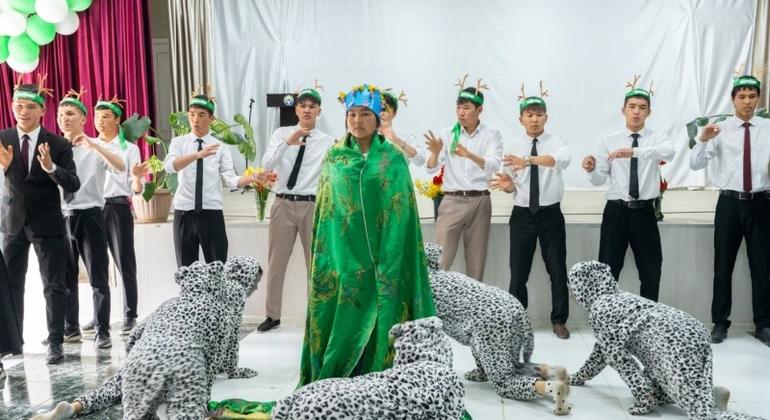
Conserve Biodiversity
UNEP-led project to support the Kunming-Montreal Global Framework for Conservation Biodiversity Agreement, a landmark 2022 agreement designed to protect wildlife. Among other things, the pact calls on countries to expand specially protected natural areas and strengthen connections between ecosystems.
Ismailova’s husband, Talant Yusupov, leads a group of rangers from the village. He says the patrols are starting to pay off. For the first time in nearly two decades, wild boar have returned to the area. Siberian mountain goats, once almost unheard of, are now seen regularly. In addition, deer antlers have been discovered in the mountains, a sign that they, too, may be returning.
“I’m very optimistic,” says Ismailova, who has five children. “We used to tell the children stories about how there were once wild boars and fish here. Now I’m happy that they can see it.”
*The article was prepared based on materials from UNEP.
